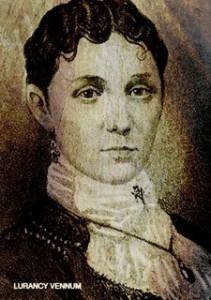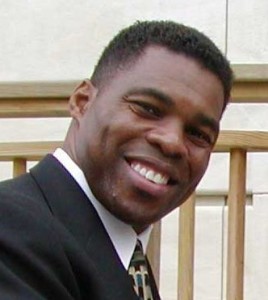Split personality or multiple personality disorder are obsolete terms for a mental disorder characterized by two distinct or dissociated mental personalities that control an individual’s behavior. Since 1994, both the terms split personality and multiple personality disorder have been officially replaced by DID, standing for Dissociative Identity Disorder. The disorder is followed by an inexplicable and partial memory loss. The distinguishing feature of DID is the development of sub-personalities, also known as alter-egos, and which may at times number as many as one hundred. DID occurs mostly in young adults and its occurrence is about seven times more in women. The first case of DID was described by Paracelsus in 1646.
1. Clara Norton Fowler

Clara Norton Fowler, also known by her pseudonym Christine Beauchamp, was the first case of split personality in the recorded history of psychiatry. She was studied by an American neurologist Morton Prince. She was a 23-year-old student who visited the Boston-based neurologist Prince because she was suffering from a nervous disorder. Prince studied her from 1898 to 1904 and described her case in his monograph Dissociation of a personality, in 1906. Her alter personalities first appeared under hypnotic influence and Prince treated her by reconciling the two personalities with the original one. Describing the case, Prince stated, ‘although making use of the same body, each … has a distinctly different character … manifested by different trains of thought, … views, beliefs, ideals, and temperament, and by different acquisitions, tastes, habits, experiences, and memories…’.
2. Shirley Ardell Mason

Shirley Ardell Mason was born to Walter Mason and Martha Alice in Dodge Center, Minnesota, U.S. on January 25, 1923 and died on February 26, 1996 at the age of seventy years. Mason’s mother was diagnosed with schizophrenia and she had a witch-like appearance, used to walk in the dark, and at times was found peeping through windows. In 1950, while Mason was a student at Columbia University, she experienced black outs, and therefore went to a psychiatrist, Cornelia B. Wilbur, for psychotherapy. Her psychotherapy sessions are the basis of the book Sybil. Mason also suffered from breast cancer and Parkinson’s disease. Wilbur continued trying to treat her until the last stages of her life. She was a commercial artist and had been running an art gallery for her living.
3. Chris Costner Sizemore

Chris Costner Sizemore was born on April 4, 1927 in Edgefield, South Carolina. She was diagnosed with multiple personality disorder or DID. She was portrayed by her psychiatrists, Corbett H. Thigpen and Hervey M. Clecley, with a pseudonym in 1950s book, The Three Faces of Eve. She appeared in public with her true identity in 1970s. Thigpen opined that Sizemore developed the disorder after seeing an accidental death. She believed that her alter-egos were born with her and in her own words, ‘Despite authorities’ claims to the contrary, my former alters were not fragments of my birth personality. They were entities, whole in their own rights, who coexisted with my birth personality before I was born. They were not me, but they remain intrinsically related to what it means to be me.’
4. Adam Duritz

Adam Duritz was born to Linda Dee and Gilbert Duritz on August 1, 1964 in Baltimore, Maryland, U.S. He is best known for his performance as front man for the rock band Counting Crows. He mentioned his disease to Men’s Health Magazine and commented, ‘This was not depression. This was not workaholism. I have a fairly severe mental illness that makes it hard to do my job — in fact, makes me totally ill suited for my job. I have a form of Dissociative disorder that makes the world seem like it’s not real, as if things aren’t taking place. It’s hard to explain, but you feel untethered.” After controlling his weight and using appropriate medication, he feels healthier than ever before.
5. Lurancy Vennum

Lurancy Vennum, commonly known as the Watseka Wonder, was born in 1868 near Watseka, Illinois. She suffered from epilepsy and often fell unconscious during the fits. After resuming consciousness, she used to say that she had visited heaven and the angels and had seen her deceased younger brother and sister. By January 1878 her condition deteriorated to the extent that her parents decided to send her to an insane asylum, but advised by a neighbor they refrained and instead sought advice from a psychiatrist. The physician E. Winchester, who had examined her, wrote a book called The Watseka Wonder. He considered it as “the most remarkable case of spirit return and manifestation ever recorded in history.’ Stevens said that Vennum often changed voice and personality.
6. Billy Milligan

Billy Milligan was born to Dorothy and Dick Jonas on February 14, 1955, in Miami Beach, Miami Dade County, Florida, U.S. He was arrested on the charges of felony and three rapes at University campus. His defense psychologists diagnosed him with split personality or DID. His lawyers pleaded insanity, claiming that the crimes were committed by two of his alternate personalities without the will or knowledge of his original personality. It was the first case of its nature in the U.S. Courts. Billy was sent to various mental institutions and was released after ten years. Biographer Daniel Keyes wrote two books, The Minds of Billy Milligan and The Milligan Wars. These books were published in Japan in 1994 and in Taiwan in 2000.
7. Robert Oxnam

Robert Oxnam graduated from William’s College and received an M.A. in Asian Studies from Yale University in 1966, and received his Ph.D in Chinese History in 1969. He was the former president of the Asia Society. He led financial and cultural tours for Bill Gates, Warren Buffet and the former U.S. President George W. Bush. He had also been on the board of the Rockefeller Brothers Fund. He came into prominence after publication of his biography, A Fractured Mind, My Life with Multiple Personality Disorder, wherein he revealed that he was diagnosed with Dissociative Identity Disorder. According to this biography, many times he woke up with burns and scratches on his body, without any idea of how he got them. Many times he found himself in a state of trance, loitering aimlessly around Grand Central Station in New York City.
8. Kim Noble

Kim Noble, a mother in her fifties, has long auburn hair and blue eyes. She is a painter and lives in a small house in south London, along with her fourteen year old daughter, two dogs and more than twenty alter personalities. Prominent among them are Patricia, the primary personality; Salome, a catholic; Judy, who appears at mealtime; and Ken, a frustrated man. Psychologists think that she had been most probably subjected to sexual abuse during her childhood, which caused the mental disorder. According to Kim, all the alter persons have their own email identities and their own passwords. Her psychologists communicate with them through emails.
9. Truddi Chase

Truddi Chase wrote her autobiography, When Rabbit Howls, in 1987. In this book she revealed that she was diagnosed with split personality, now called Dissociative Identity Disorder. She came to know of her mental disorder after she went to sessions with hypnotherapist Dr.Robert Phillips. She mentioned in her book that she was subjected to child abuse by her stepfather. During a television interview with Oprah Winery, she stated that a Washington Post reporter had tracked her family, including her stepfather. Chase was the first guest on Winfrey’s Radio show and one of the first guests on her famous television show. Her autobiography was televised in a two-part ABC miniseries.
10. Herschel Walker

Herschel Junior Walker was born on March 3, 1962 in Wrightsville, Georgia, U.S. He is a former American college and professional football player and he is also known as a mixed martial artist. In 1997, he was inducted into the College Football Hall of Fame. In his autobiography titled Breaking Free, published in 2008, he revealed that he suffered from split personality, now known as Dissociative identity disorder. He said that due to his mental disorder, he did not remember the season he won the Heisman Trophy. He discussed his Dissociative Identity Disorder during a visit on October 11, 2011 to the Central Park Campus of Collin College in McKinney, Texas. He is still under treatment for DID.
Conclusion:
Reported cases of DID vary from 1 to 3% in different communities. Since different literary genres are associated with close observation of human suffering, the cases of DID have been appearing in literature from time to time and a few literary works have renewed public interest in this disorder. Literary references to DID include Mary Shelley’s Frankenstein, Robert Louis Stevenson’s Strange Case of Dr.Jekyll and Mr. Hyde, and many short stories by Edgar Allan Poe. The disorder has been critically reviewed from different angles on account of the related legal complications.








Leave a Reply